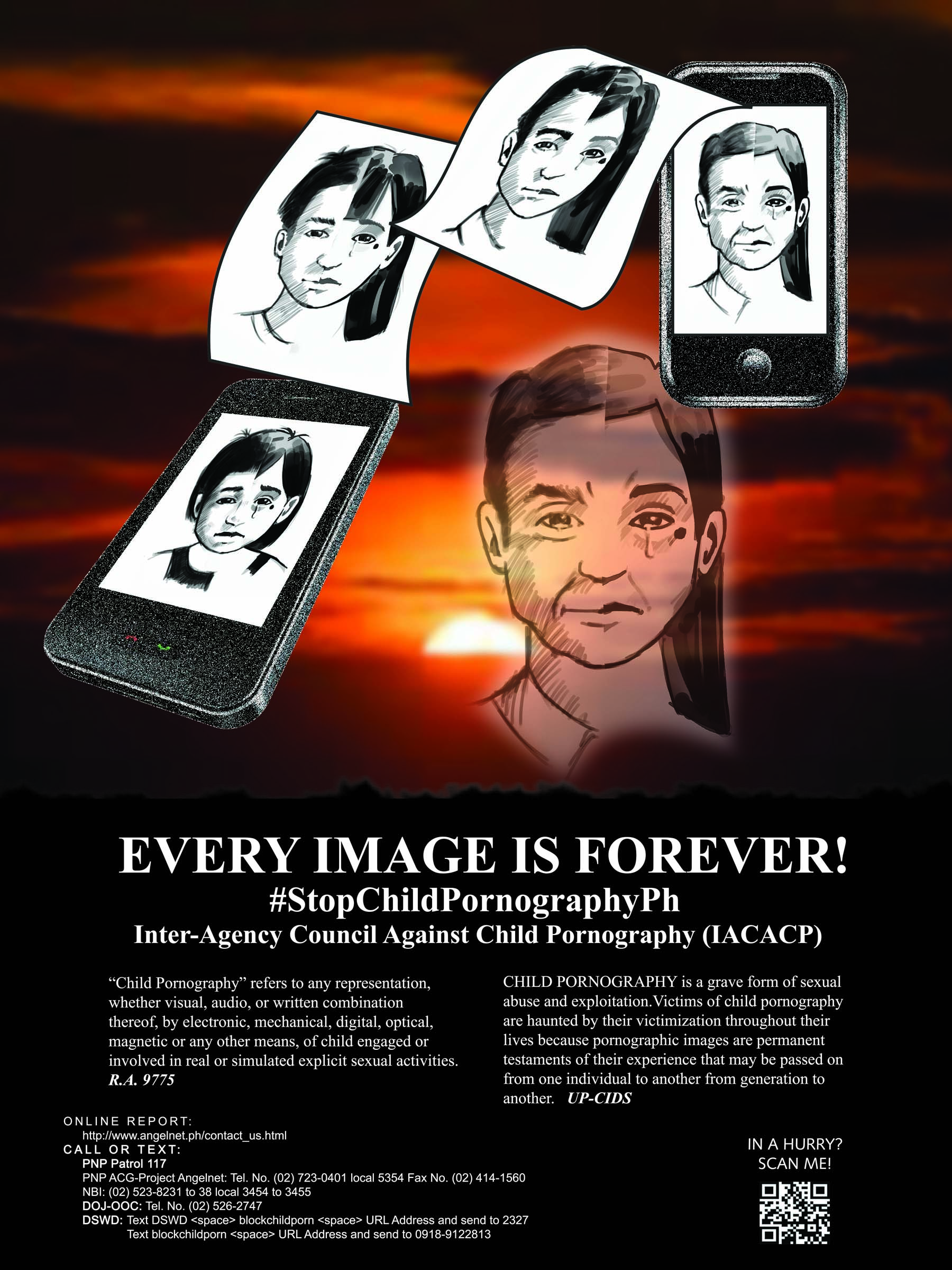To prevent and stop child pornography or online child abuse and exploitation everyone must take responsibility to report this form of abuse and exploitation.
If someone needs immediate help due to threat to life, safety and security you should contact:
- Patrol 117
- Action Hotline 1343 for human trafficking in relation to child pornography
What to report?
- GROOMING – act of preparing a child or someone who the offender believes to be a child for sexual activity or sexual relationship by communicating any form of child pornography.
- LURING – act of communicating, by means of a computer system, with a child or someone who the offender believes to be a child for the purpose of facilitating the commission of sexual activity or production of any form of child pornography.
- PANDERING – act of offering, advertising, promoting, representing or distributing through any means any material or purported materials that is intended to cause another to believe that the material or purported material contains any form of child pornography, regardless of the actual content of the material or purported material.
- SEXTORTION – refers to the crime of extortion involving sex-related digital photos. Extortion victimizes someone by demanding money, property, sex, or some other “service” from the person and threatening to harm him or her if the demand isn’t met.
- SEXTING – refers to sex-related text content or nude photos taken and shared via cellphone
- CYBERSEX – The willful engagement, maintenance, control, or operation, directly or indirectly, of any lascivious exhibition of sexual organs or sexual activity, with the aid of a computer system, for favor or consideration
- WEBCAM CHILD SEX TOURISM – is when adults offer payment or other rewards to direct and view live streaming video footage of children in another country performing sexual acts in front of a webcam. (Terres des Hommes, 2013)
- CYBERBULLYING is the use of communications technology to harm, threaten, or otherwise victimize another person.
- Much cyberbullying is sexual harassment. Conduct does not have to be sexual in nature to constitute harassment. It can also include demeaning a person because of that person’s gender or that person’s sexual activity.

